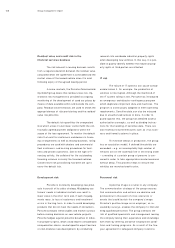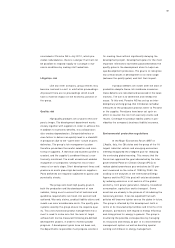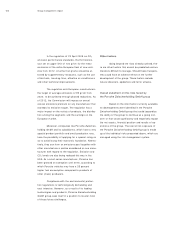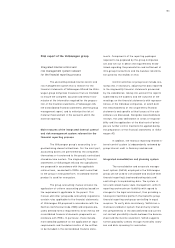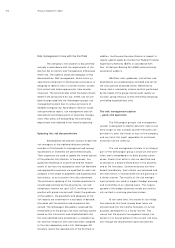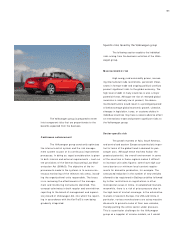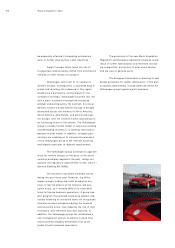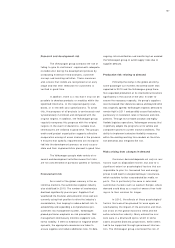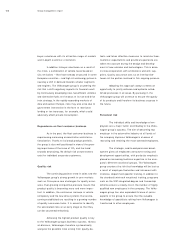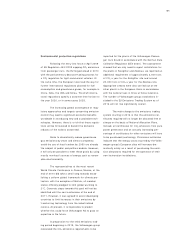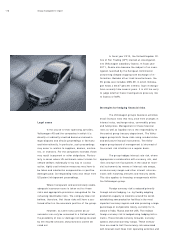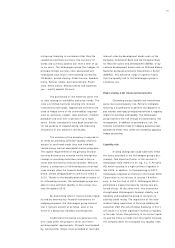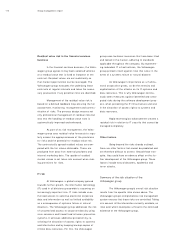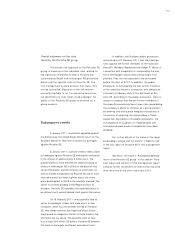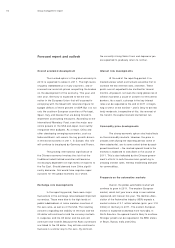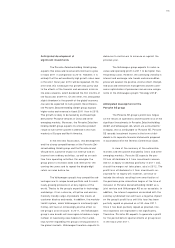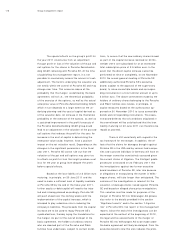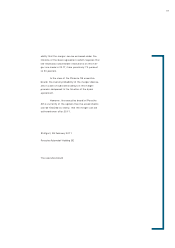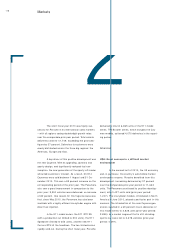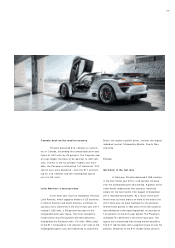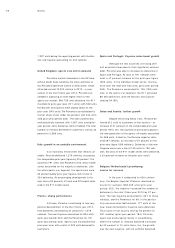Porsche 2010 Annual Report Download - page 112
Download and view the complete annual report
Please find page 112 of the 2010 Porsche annual report below. You can navigate through the pages in the report by either clicking on the pages listed below, or by using the keyword search tool below to find specific information within the annual report.
Group management report
Legal cases
In the course of their operating activities,
Volkswagen AG and the companies in which it is
directly or indirectly invested become involved in
legal disputes and official proceedings in Germany
and internationally. In particular, such proceedings
may occur in relation to suppliers, dealers, custom-
ers, or investors. For the companies involved, these
may result in payment or other obligations. Particu-
larly in cases where US customers assert claims for
vehicle defects individually or by way of a class
action, highly cost-intensive measures may have to
be taken and substantial compensation or punitive
damages paid. Corresponding risks also result from
US patent infringement proceedings.
Where transparent and economically viable,
adequate insurance cover is taken out for these
risks and appropriate provisions recognized for the
remaining identifiable risks. The company does not
believe, therefore, that these risks will have a sus-
tained effect on the economic position of the group.
However, as some risks cannot be as-
sessed or can only be assessed to a limited extent,
the possibility of loss or damage not being covered
by the insured amounts and provisions cannot be
ruled out.
In fiscal year 2010, the United Kingdom Of-
fice of Fair Trading (OFT) started an investigation
into Volkswagen subsidiary Scania. In fiscal year
2011, Scania also became the subject of an inves-
tigation launched by the European Commission
concerning alleged inappropriate exchange of in-
formation. Besides other truck manufacturers, the
EU probe also includes MAN SE, in which Volkswa-
gen holds a 28.67 percent interest. Such investiga-
tions normally take several years. It is still too early
to judge whether these investigations pose any risk
to Scania or MAN.
Strategies for hedging financial risks
The Volkswagen group’s business activities
entail financial risks that may arise from changes in
interest rates, exchange rates, commodity prices
and fund prices. Management of these financial
risks as well as liquidity risk is the responsibility of
the central group treasury department. The Volks-
wagen group limits these risks using non-derivative
and derivative financial instruments. The Volks-
wagen group board of management is informed of
the current risk situation on a regular basis.
The group hedges interest rate risk, where
appropriate in combination with currency risk, and
risks arising from fluctuations in the value of finan-
cial instruments by means of interest rate swaps,
cross-currency swaps and other interest rate con-
tracts with matching amounts and maturity dates.
This also applies to financing arrangements within
the Volkswagen group.
Foreign currency risk is reduced primarily
through natural hedging, i.e., by flexibly adapting
production capacity at locations around the world,
establishing new production facilities in the most
important currency regions and also procuring a large
percentage of components locally, currently for in-
stance in India, Russia and the USA. The residual
foreign currency risk is hedged using hedging instru-
ments. These include currency forwards, currency
options and cross-currency swaps. These transac-
tions are used to limit the currency risk associated
with forecast cash flows from operating activities and
110


